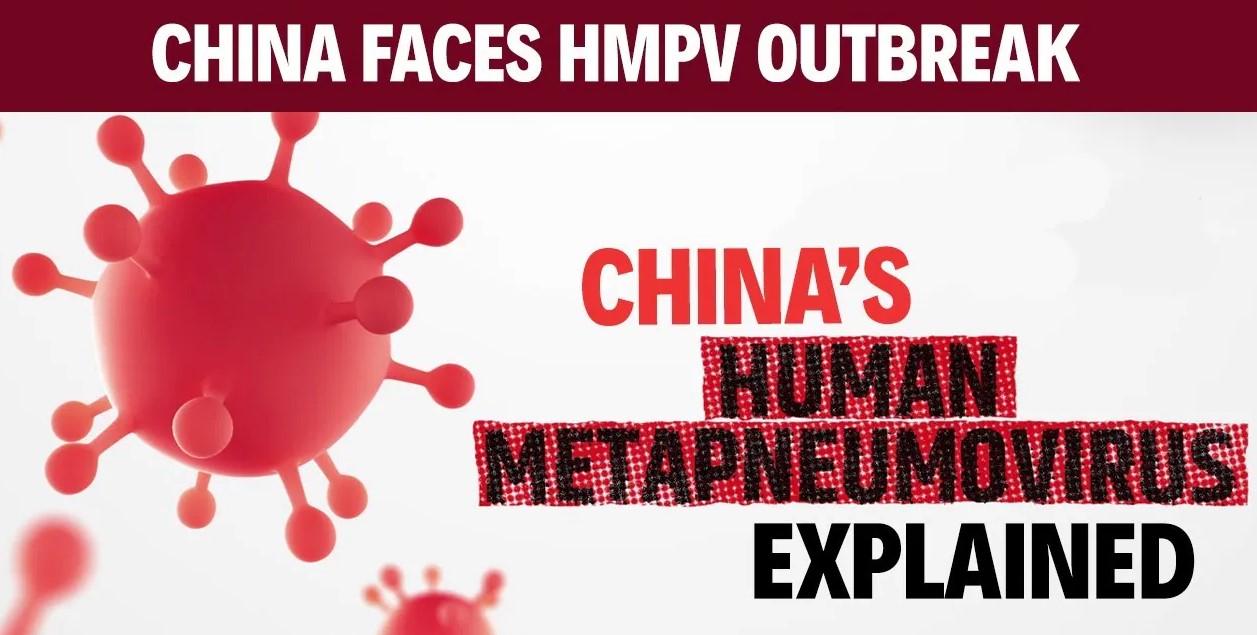Rising Concerns Over HMPV Surge in China – How Does It Compare to COVID-19?
Rising Concerns Over HMPV Surge in China: How Does It Compare to COVID-19?
In recent weeks, China has been facing a notable surge in respiratory illnesses, with Human Metapneumovirus (HMPV) emerging as a key concern among health authorities. Although the government has not declared an emergency, the situation is being closely monitored, particularly in light of growing concerns about the potential spread of multiple respiratory pathogens. These include not only HMPV but also influenza A, Mycoplasma pneumoniae, and COVID-19.
A New Health Challenge in China
China’s health authorities are ramping up efforts to manage respiratory illnesses with protocols already in place for responding to emerging pathogens. In December 2024, the country introduced a pilot program to track cases of pneumonia of unknown origin, anticipating a rise in cases during the winter and spring months. While there has been no official declaration of an emergency, the surge in infections, particularly in northern provinces, is drawing significant attention. Social media posts have highlighted overcrowded hospitals, amplifying public concern about the situation.
HMPV, a virus that was first identified in 2001, is one of the leading culprits in this rise. It belongs to the Pneumoviridae family, which is closely related to Respiratory Syncytial Virus (RSV), another common cause of respiratory issues. HMPV usually causes mild symptoms like a runny nose, cough, and sore throat. However, in vulnerable groups—such as young children, the elderly, and those with weakened immune systems—the infection can escalate to more serious conditions like pneumonia and bronchitis.
The Centers for Disease Control and Prevention (CDC) notes that HMPV has an incubation period of 3 to 6 days, and while the infection may start with mild cold-like symptoms, it can quickly progress to more severe respiratory distress in high-risk groups.
Is HMPV Similar to COVID-19?
While HMPV and SARS-CoV-2 (the virus responsible for COVID-19) come from entirely different viral families, there are key similarities between the two:
- Respiratory Impact: Both primarily affect the respiratory system, with a range of symptoms from mild to severe.
- Mode of Transmission: Both viruses spread through respiratory droplets when an infected person coughs, sneezes, or talks, and they can also be contracted by touching contaminated surfaces.
- Symptoms Overlap: Common symptoms include fever, cough, sore throat, wheezing, shortness of breath, and fatigue.
- Vulnerable Populations: Children, the elderly, and those with compromised immune systems are at a higher risk of developing severe symptoms from both viruses.
- Preventive Measures: Practices like wearing masks, maintaining hand hygiene, and social distancing are effective in preventing the spread of both viruses.
However, a major distinction is the availability of vaccines. While there are highly effective vaccines for COVID-19, there is currently no vaccine for HMPV. Additionally, treatment options for HMPV are quite limited, whereas various antiviral medications, including Paxlovid, are available for COVID-19.
A Post-Pandemic Surge?
The timing of this surge in HMPV infections is noteworthy. A study published in Virology Journal in April 2024 documented a significant rise in HMPV cases in Henan, China, after the COVID-19 pandemic. Between April and June 2023, cases of HMPV were frequently detected in hospitals, with a notable increase in daily admissions. Experts suggest that the post-COVID-19 environment, with widespread immunity gaps and lingering effects from the pandemic, may be contributing to the spread of HMPV and other respiratory pathogens.
As winter and spring approach, experts are urging continued vigilance. China’s disease control authorities have stepped up surveillance and public health measures to manage the growing number of respiratory illnesses, focusing on early detection, transparent communication, and ensuring adequate healthcare resources.
Should We Be Concerned?
Despite the rise in HMPV cases, health experts remain cautious but not alarmed. Dr. Atul Goyal, Director of India’s National Centre for Disease Control (NCDC), has stated that there have been no reported cases of HMPV in India. He emphasized that while HMPV is a viral infection that causes flu-like symptoms, it is akin to the common cold in many cases, especially in children and the elderly. He urged the public to adhere to standard precautions, such as avoiding close contact with the sick and using over-the-counter medications to manage symptoms.
Dr. Goyal also noted that there has been no significant uptick in respiratory outbreaks in India and assured the public that hospitals are adequately equipped to handle seasonal surges in infections. Therefore, while keeping an eye on emerging infections is important, there is no immediate cause for alarm in regions like India at the moment.
What’s Next for HMPV and Other Respiratory Viruses?
With respiratory viruses like HMPV on the rise, particularly in regions like China, the focus should remain on ongoing monitoring and preparedness. Experts advise that public health agencies continue to refine their surveillance systems, bolster health infrastructure, and improve communication with the public to mitigate anxiety.
While it is impossible to predict the exact trajectory of this virus, experts agree that maintaining preventive measures—such as vaccination for COVID-19, flu shots, and proper hygiene—will help reduce the spread of respiratory diseases and alleviate the burden on healthcare systems.
while HMPV does present certain similarities to COVID-19 in terms of its respiratory impact and transmission patterns, it remains distinct in its biological characteristics and current lack of effective vaccines and treatments. Public health efforts must remain agile, especially as the flu season and the potential for other respiratory infections loom on the horizon.
Also Read-
HMPV Virus – China Faces New Health Crisis Amid Multiple Virus Outbreaks
